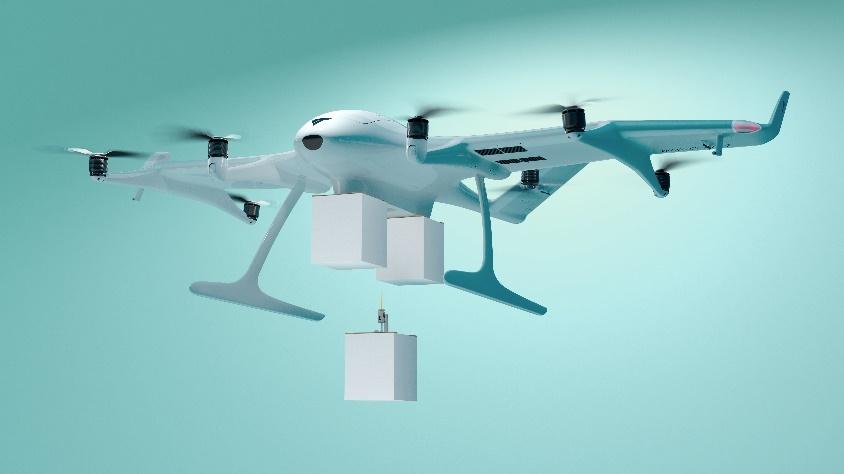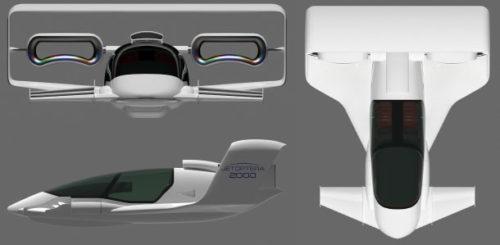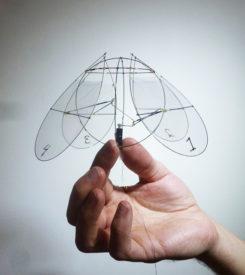Leading Edge UAM

The innovation and out-of-the-box thinking fueling the urban air mobility (UAM) industry not only rivals the turn of the 20th century transportation advances made by the Wright Brothers and Henry Ford, it’s fair to say, by the mid-21st century, it will surpass them.
Engineers and inventors are developing revolutionary transportation beyond anything aviation pioneers could even dream of a mere 50 years ago. Here are some of our favorites on the horizon.

Look, Ma – No rotors! Jetoptera’s VTOLs have ditched blades for jet propulsion. (Photo courtesy Jetoptera)
Rotors? Who Needs Rotors?
Jetoptera, a Seattle, Washington, US-based VTOL developer (no “e,” the company uses gas generators to power its aircraft) believes it has a better approach to urban air mobility, one that doesn’t involve rotors or blades.
The company is designing what it’s calling a “fluidic propulsion system (FPS).” FPS is similar to the bladeless fans British inventor Sir James Dyson developed for his bagless vacuum cleaner, which works on the principle of cyclonic separation. The design is intriguing enough that the US Air Force awarded Jetoptera two contracts to better understand the aircraft’s noise profile and to demonstrate whether FPS, in conjunction with an upper surface blown wing configuration, can produce lift forces equal to, or greater than, those of conventional rotor-wing helicopters.
Leveraging the principle of fluid entrainment, a Jetoptera VTOL might be capable of sucking through 15 times the volume of air fed by its compressor, all while producing noise levels around 50dBA, equivalent to that of a refrigerator. The J-2000 model (named for its 2,000-lbs. (907-kgs) maximum takeoff weight) will be a two-seater capable of a top speed of 200 mph (about 322 kph) and a 200-mile (about 322 km) range. The plans also include a four-seater (the J-4-000) with the same target range.
Hey, Drone: Drop and Give Me Three – Packages, That Is
Wingcopter, a Weiterstadt, Germany-based developer of unmanned aerial systems (UAS), released plans for what it believes is the world’s first triple-drop delivery drone, the Wingcopter 198.
Using three winches, the Wingcopter 198 drone can deliver up to three packages to multiple locations in a single flight. Using an AI-based detect-and-avoid system, a single operator can oversee operations of up to 10 Wingcopters simultaneously.
The Wingcopter is a fixed-wing eVTOL capable of carrying payloads of 13 lbs. (about 6 kg) across 47 miles (75 km), or with lighter payloads, up to 68 miles (110 km). Wingcopter, which has applied for U.S. FAA type certification, was designed with a highly redundant system architecture, using eight motors versus four.
The detect-and-avoid system combines Automatic Dependent Surveillance – Broadcast (ADS-B), Flarm, Remote ID, and visual AI to interpret the flight environment in real-time facilitating automatic evasive maneuvers. Downward-facing cameras use AI-based optical sensing to ensure safe, accurate parcel drops and precision landing.
A ‘Flying Jellyfish’
Researchers from New York University (NYU) unwittingly developed what they call a “flying jellyfish.” Applied mathematicians, Leif Reistroph and Stephen Childress, set out to develop a toy and ended up producing an ornithopter instead.
It flaps its four downward-pointing wings in and out, bobbing like a jellyfish as it ascends and hovers. In response to a gust of air, it flies sideways for a short distance before spontaneously righting itself.
The ‘aircraft’ is composed of four carbon-fiber loops and Mylar film and could end up being used for everything from environmental monitoring to military reconnaissance. It weighs in at 2.1 grams (about 0.7 ounces) and measures 10 cm wide (about 3.9 inches).
Wind-tunnel experiments being conducted at NYU’s Applied Mathematics Lab led Childress and his colleagues to experiment with how small paper objects move in an oscillating vertical air current. They soon discovered that hollow cones and pyramids were the simplest shapes to generate lift and right themselves in vertical air currents.
A Helluva Lot of Helium
UK-based Varialift Airships Plc has designed and patented a lightweight VTOL airship capable of operating at about 150 mph to 220 mph (250kph to 350 kph) and ferrying payloads from 110,000 lbs. to 600,000 lbs. (about 50 metric tons to 3,000 metric tons).
It can operate in front- and cross-winds up to 50 knots (about 60 mph) at an operating cost the company projects will be 80% – 90% less than comparable cargo helicopters.
The company has partnered with the City of Chateaudun, France, where it hopes to hire 300 employees to manufacture the lighter-than-air (helium) aircraft at the roughly 100-acre (40 hectares) site it has secured.





